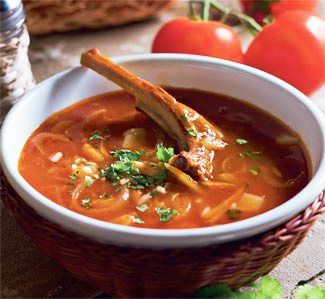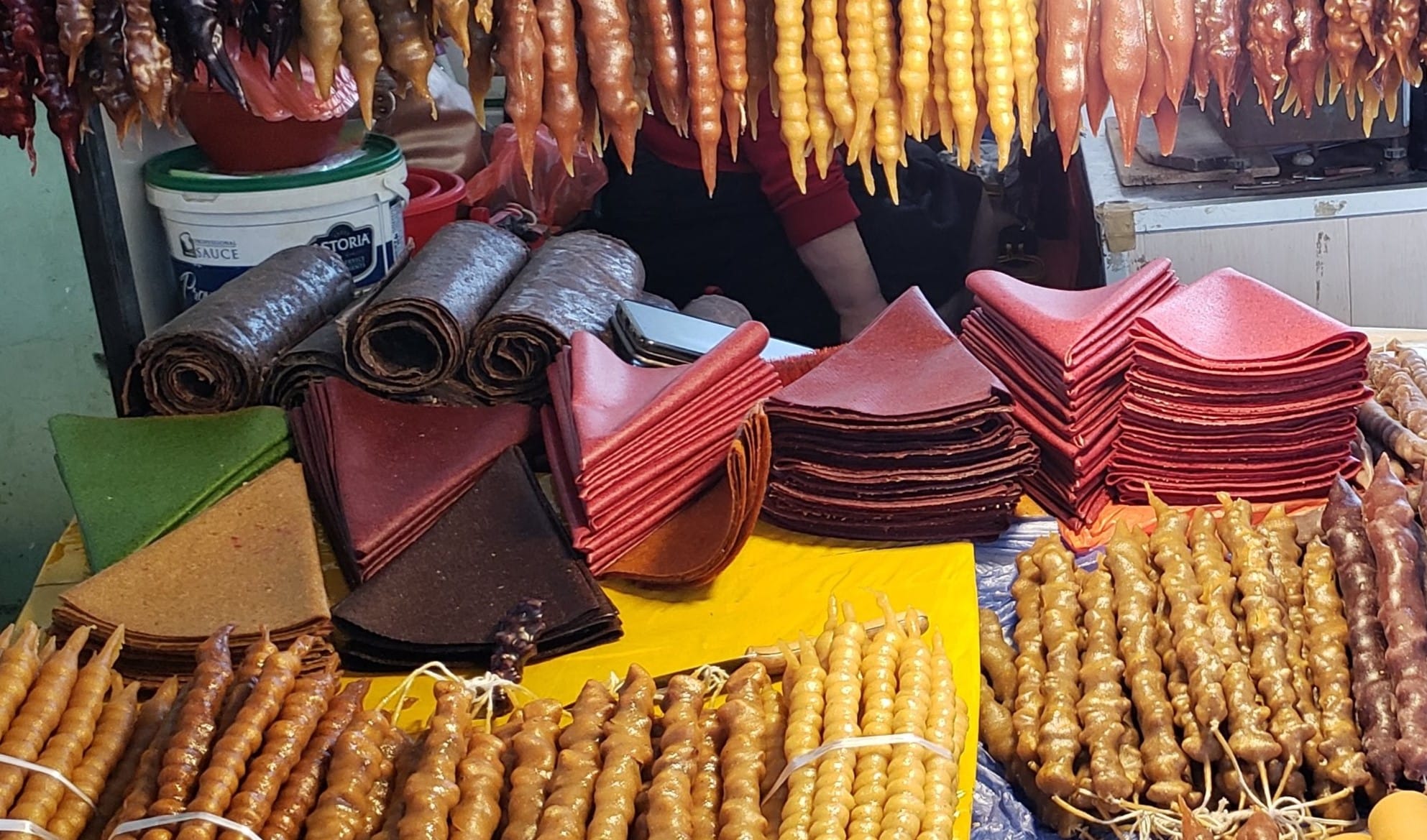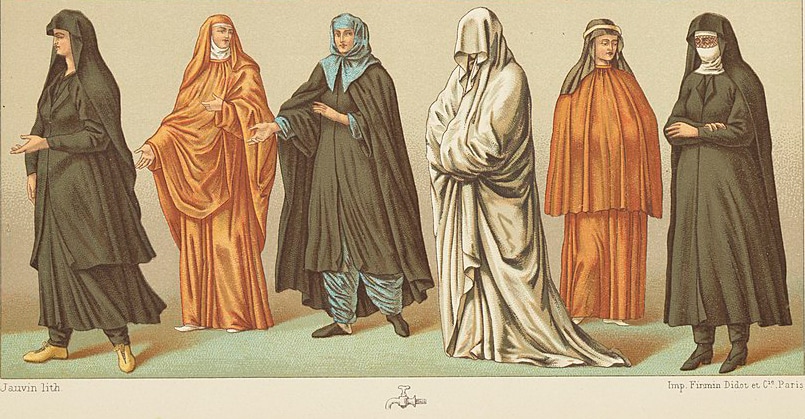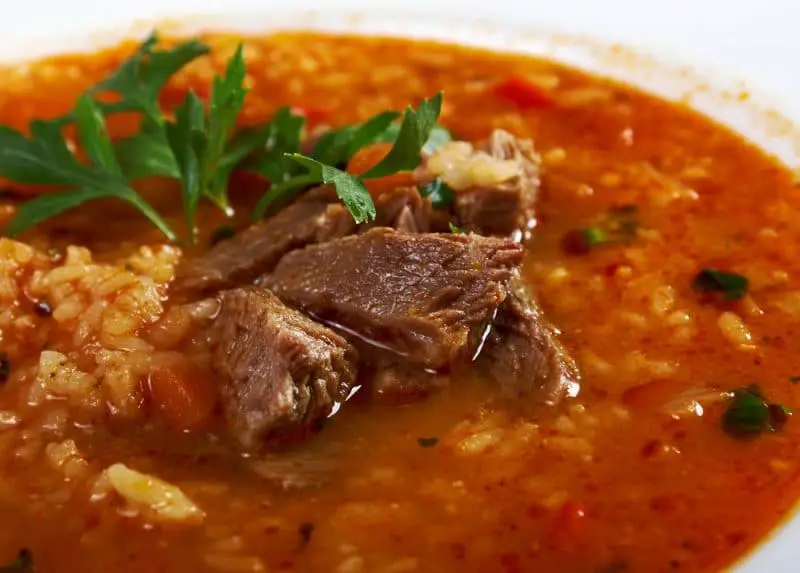 For those of us who have had the singular pleasure of being seated behind a hefty bowl of kharcho (харчо), it is hard to describe exactly how delicious this Georgian delicacy really is. It is also, interestingly enough, hard to describe what it actually is, as there is rather heated disagreement about several of the ingredients central to the recipe. All recipes agree, however, that kharcho is a hearty meat and rice soup, distinguished most by the flavor kick of its characteristic walnuts and sour(ish) plum component. While it is undeniably a dish native to Georgia, it is, like nearly all Georgian foods, enjoyed across the entirety of the former USSR.
For those of us who have had the singular pleasure of being seated behind a hefty bowl of kharcho (харчо), it is hard to describe exactly how delicious this Georgian delicacy really is. It is also, interestingly enough, hard to describe what it actually is, as there is rather heated disagreement about several of the ingredients central to the recipe. All recipes agree, however, that kharcho is a hearty meat and rice soup, distinguished most by the flavor kick of its characteristic walnuts and sour(ish) plum component. While it is undeniably a dish native to Georgia, it is, like nearly all Georgian foods, enjoyed across the entirety of the former USSR.
How It Got Its Name
(Почему он носит такое название?)
The name of the soup, “kharcho”, is derived from the dish’s actual Georgian appelation: “дзерохис хорци харшот” (dzerokhis khortsi kharshot), which, in Georgian, means simply “beef soup.” While other meats (especially lamb), are sometimes used, many purists refuse to make kharcho with anything but beef, citing the improbability of making, for example, beef soup from lamb.
When and How to Eat Kharcho
(Как правильно есть харчо?)
Kharcho, like many Georgian foods that have found a most appreciative home in Russia, requires no special occasion to be devoured; the love for the dish is too great to restrict its ingestion! In the soup’s native land, as well, kharcho is extremely common.
How to Prepare Kharcho
(Как правильно готовить харчо?)

The most complex aspect of kharcho is most definitely what to put in it! As mentioned above, there are various disagreements regarding the components of the soup. Absolute purists will not call a soup kharcho if it is not made using the following trinity of ingredients: beef, grated walnuts, and “тклапи” (tklapi) ‒ a dried puree of cherry plums. Many, however, call it fair play to either replace these ingredients with others (as is the case with both the beef and tklapi) or to leave them out altogether (a most common occurrence with the walnuts). The traditional beef in the recipe is most commonly switched out for lamb, but there are pork, chicken and even goose variants on the kharcho theme. The soup’s base, tklapi, is now often replaced with fresh cherry plums, a popular Georgian sauce made from these plums called “ткемали” (tkemali), tomatoes and/or tomato paste, or even pomegranate juice.
While pre-prepared tklapi is a rarity in both America and in Russia, tkemali can be purchased easily online. You might also check at your local grocery story to inquire if they might have cherry plums in stock or if they can special order them if you are interested in trying the recipe with fresh fruit.
Another ingredient that can be difficult to find in Georgian cooking is a spice mix called “хмели сунели” (khmeli suneli), which contains a variety of ingredients including saffron, pepper, basil, dill, cilantro, and marjoram. It is used in kharcho as well as many other Georgian dishes. However, again, the age of Internet wonders is upon us and khmeli suneli can be found online at Amazon and specialty spice retailers. Don’t feel bad about investing in whole bottles of either of these unique ingredients – tkemali complements nearly any meat dish and can be used in place of ketchup or barbecue sauce for a spicier, more original flavor. For those who cook, khmeli suneli can complement nearly any dish in which the main ingredient is beef, lamb, or beans.
While there is a lot of disharmony regarding what should be put in this soup, there is the general rule that before ingesting your kharcho, it should be topped off with cilantro!
Kharcho Recipe
(Давай Приготовим!)
| Суп-харчо по-грузински | Georgian Kharcho |
Ингредиенты (на трехлитровую кастрюлю)
Приготовление
|
Ingredients (for a 3-liter pot)
Preparation
|
Our Favorite Kharcho Videos
This video is part of a series on traditional Georgian cuisine. A very good foundational video on kharcho as it not only showcases some of the variations spoken of above (they use tomato paste instead of tklapi) and some shortcuts all its own (e.g. there is a blender involved), but there is also a kind of question-and-answer session about the nature of the dish itself going on between the host and the chef.
This is an amateur video made by a fairly prolific Russian cooking blogger. Although the quality is not optimal at times, it is a good one to watch as she uses lamb and also throws in some preparation variations, such as cooking her meat beforehand. Also interesting to look at the comments posted under the video; the argument over kharcho ingredients is alive and well even on the Internet!
Very cool video that is actually an advertisement for a multi-cooker. Shows you a nice, quick-and-dirty version of kharcho using tkemali.
You Might Also Like
The Talking Phrasebook Series presents useful phrases and words in side-by-side translation and with audio files specifically geared to help students work on listening skills and pronunciation. Each entry below, divided by category, features an English word or phrase in the left column and its Georgian translation in the right. The Georgian is presented in […] Georgian holidays strongly reflect the country’s unique traditions and its demographics. First, as more than 80% of Georgians identify with the Georgian Orthodox Church, the strong influence of the church can be felt in the preponderance of Orthodox holidays. Georgia also has several holidays celebrating its statehood and independence, which have been hard-won. We can […] Fruit leather is simple, ancient food. Like bread and roasted meat, it likely independently evolved in several places. At its most basic, it is simply mashed fruit smeared to a sheet and left to dry in the sun. The result is a flavor-intensive food that travels well and can keep for months. The oldest known […] This guide to travel in Georgia is tailored for Jewish-American university students preparing to study abroad in Georgia. We navigate the historical depth and modern vibrancy of Jewish life in this culturally rich country. Discover key historical sites, engage with local Jewish communities, and find practical tips on maintaining kosher practices and observing Shabbat while […] Despite their cloistered livelihood, nuns have found their way into many veins of popular theater and movies. However, their usual depiction, wearing black habits with a veil and carrying a rosary, is not accurate for all nuns. It is true that the symbolic meaning of the habit is consistent across both Catholic and Eastern Orthodox […]
The Talking Georgian Phrasebook

Georgian Holidays 2025: A Complete Guide

Tklapi, Pastegh, Lavashak: One Ingredient Fruit Leather from the Caucasus

Jewish Georgia: A Brief History and Guide

The Habits of Nuns in Catholic and Orthodox Traditions





